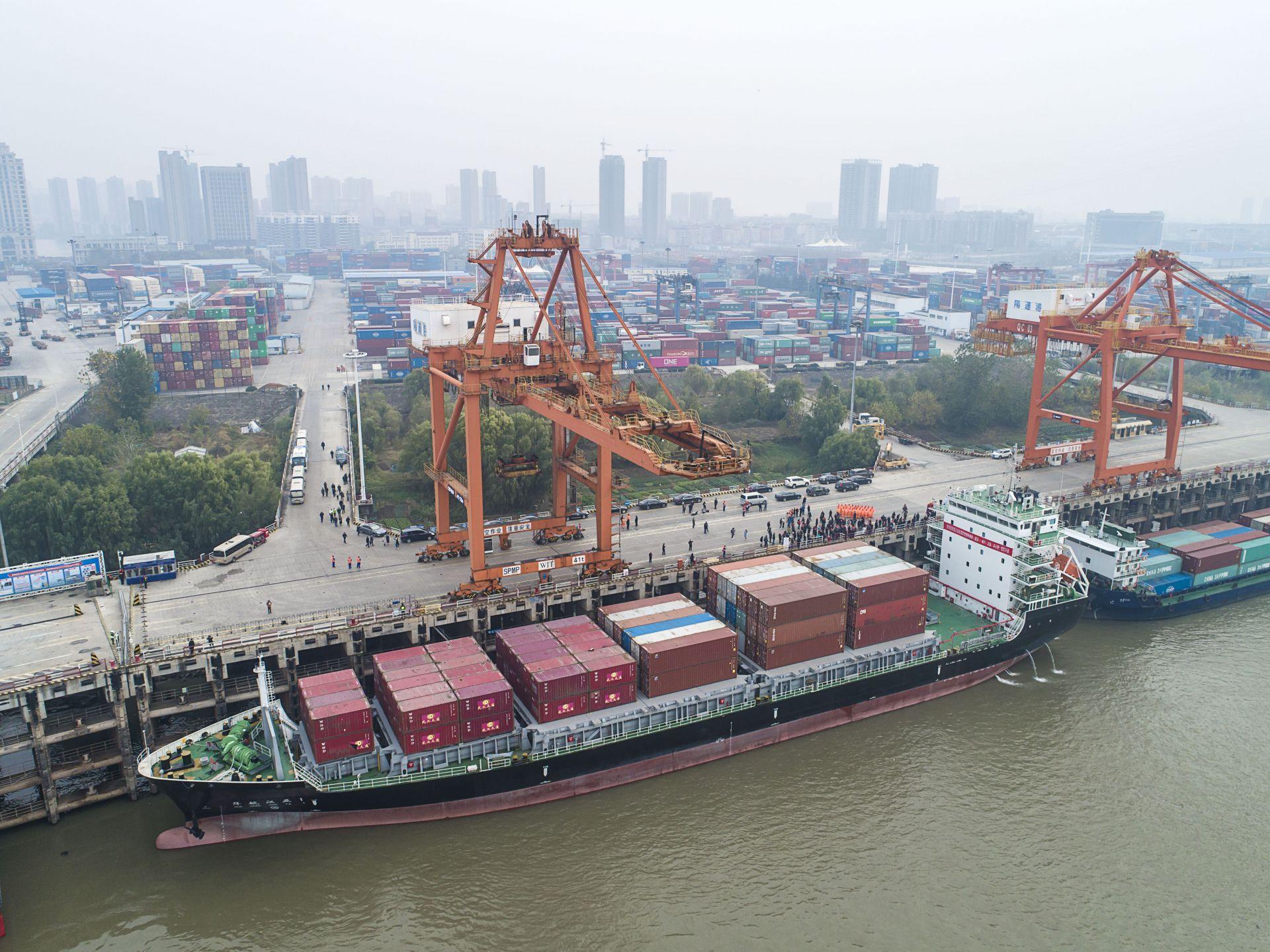
WUHAN, Nov. 28 (Xinhua) – A direct container shipping route that connects Wuhan, capital of Central China's Hubei Province, with cities in Japan including Osaka, Kobe and Nagoya was officially kicked off on November 28.
Compared with existing routes, the river-ocean container shipping route can save about two days and takes only five days for cargo to reach the above-mentioned ports of Japan from Wuhan city.
Apart from largely reducing logistics costs, the container shipping route also helps expand the railway-waterway joint transportation channels between Japan and Europe through Wuhan as a place of transshipment.
As Zhang Lin, director of Wuhan New Port Administration Committee, introduces, direct container shipping services will be offered once a week with two vessels on duty by turns.
Upon the future stable operation of the route, services will be increased to twice a week with four container ships providing services by turns together with an increase in ports of call in Japan, according to Zhang.
By April 2020, the route is expected to link up with the Sino-Europe freight train routes of Wuhan to realize multi-model international transportation via transshipment in the city.
By the closed-loop international logistics channel, goods from Japan can be delivered to regions such as Central Asia, the Middle East and Europe.
In recent years, 80 percent of export commodities of Wuhan, whose foreign trade kept growing rapidly, have been exported via shipping, triggering tremendous demands for direct international shipping routes.
In 2018, Japan became the fourth largest trading partner of China's Hubei Province and the second largest trading partner of Wuhan, with annual trade value with Hubei reaching 27.4 billion yuan, up 18.5 percent year on year.
Launching the direct container shipping route will help unlock the economic complementarities between Wuhan and Japan. By integrating with the Sino-Europe freight train routes of Wuhan, it is good for enterprises from Wuhan and Japan to jointly explore the third party market in Central Asia, the Middle East and Europe, said industry insiders. (Edited by Duan Jing, duanjing@xinhua.org)




 A single purchase
A single purchase









